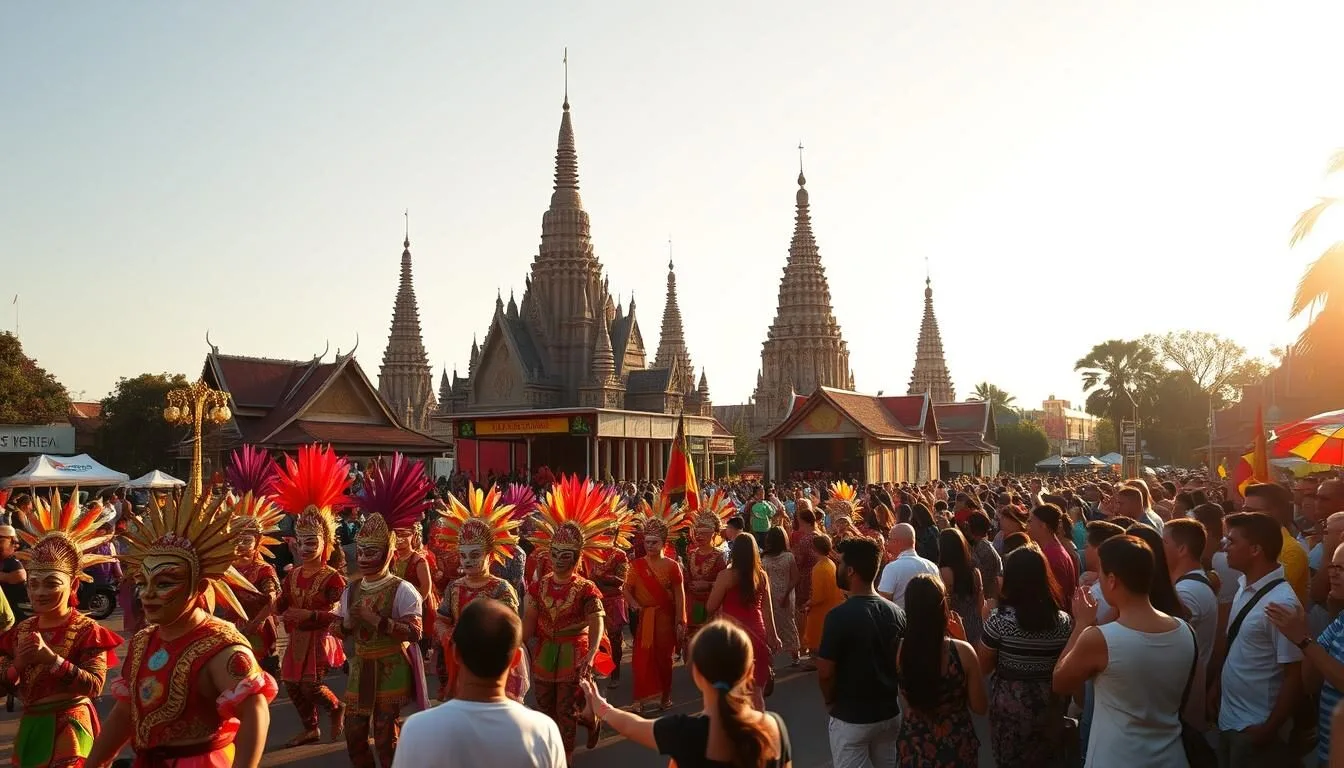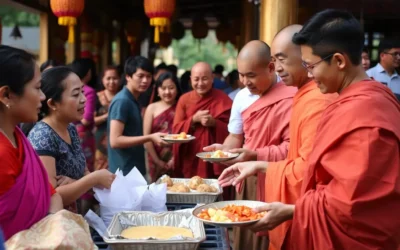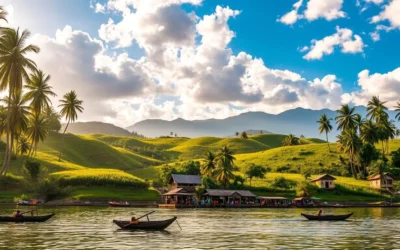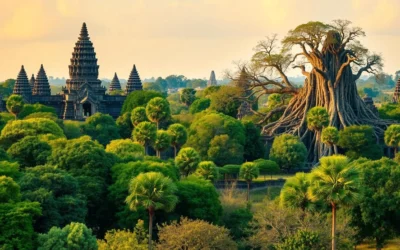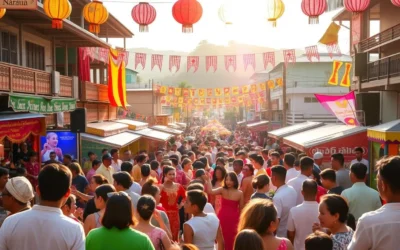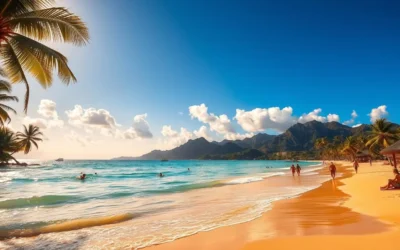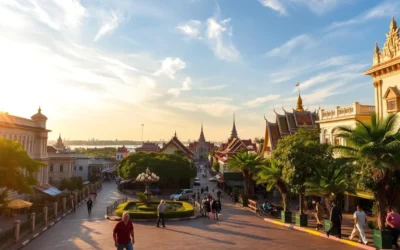When traveling to Cambodia, you’re not just visiting a country; you’re immersing yourself in a rich cultural heritage. The festivals in Siem Reap are a testament to the nation’s deep-rooted traditions and celebrations that bring people together.
You’ll discover that Siem Reap is not just famous for Angkor Wat but also for its vibrant festival scene. The festivals provide a perfect opportunity to witness centuries-old traditions that have survived even through the country’s turbulent history. Each festival has its unique significance, often tied to Buddhism, agricultural cycles, or historical events that shaped Cambodia.
The Cultural Significance of Cambodian Festivals
The vibrant festivals of Cambodia offer a glimpse into the nation’s complex cultural landscape. These events are not just celebrations; they’re a reflection of Cambodia’s rich and varied cultural history. Most of the celebrations follow the Khmer lunar cycle, drawing inspiration from Buddhism, Hinduism, and old royal customs.
Preserving Ancient Traditions Through Celebrations
Cambodian festivals serve as living museums, preserving traditions that date back to the ancient Angkor period. Through these celebrations, you’ll witness how Cambodians strengthen community bonds and maintain their cultural identity. The preservation of these traditions has survived even through periods of historical turmoil, demonstrating their importance to Cambodian identity.
The Role of Buddhism in Cambodian Festivals
Buddhism plays a central role in most Cambodian festivals, reflecting the country’s complex religious landscape. Many festivals combine religious devotion with joyful celebration, showing the balanced approach to life in Cambodian culture. For instance, the Meak Bochea festival commemorates the Buddha’s teachings, while the Vesak Bochea festival celebrates the Buddha’s life.
| Festival | Significance | Cultural Impact |
|---|---|---|
| Meak Bochea | Commemorates the Buddha’s teachings | Strengthens community bonds through religious devotion |
| Vesak Bochea | Celebrates the Buddha’s life | Promotes cultural identity through joyful celebration |
| Khmer New Year | Marks the beginning of the new year | Preserves ancient traditions through festivities |
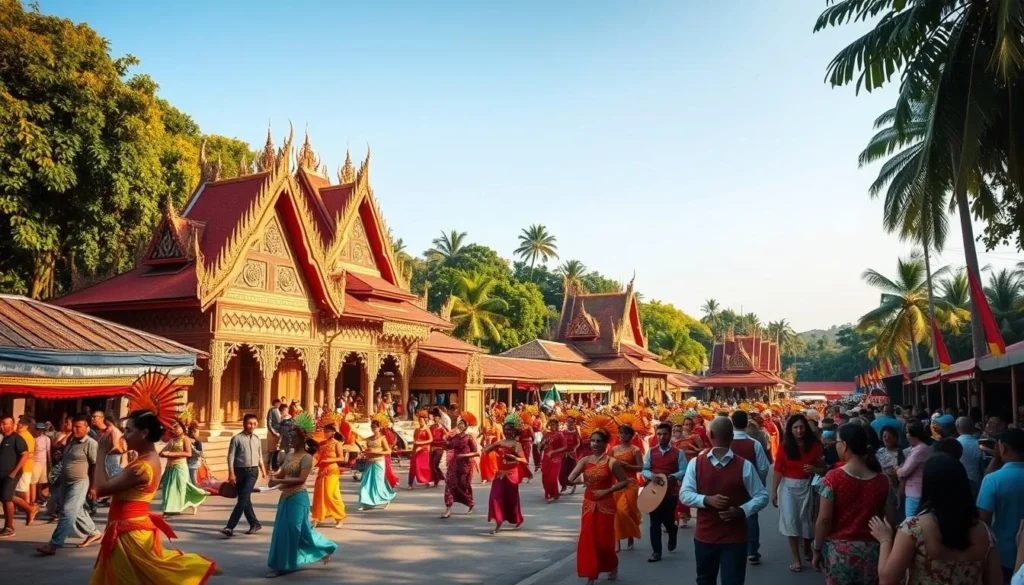
Khmer New Year: Cambodia’s Most Celebrated Festival
Experience the vibrant culture of Cambodia during Khmer New Year in Siem Reap. This significant festival marks the end of the harvest season and the beginning of the rainy season, typically celebrated on April 13th or 14th.
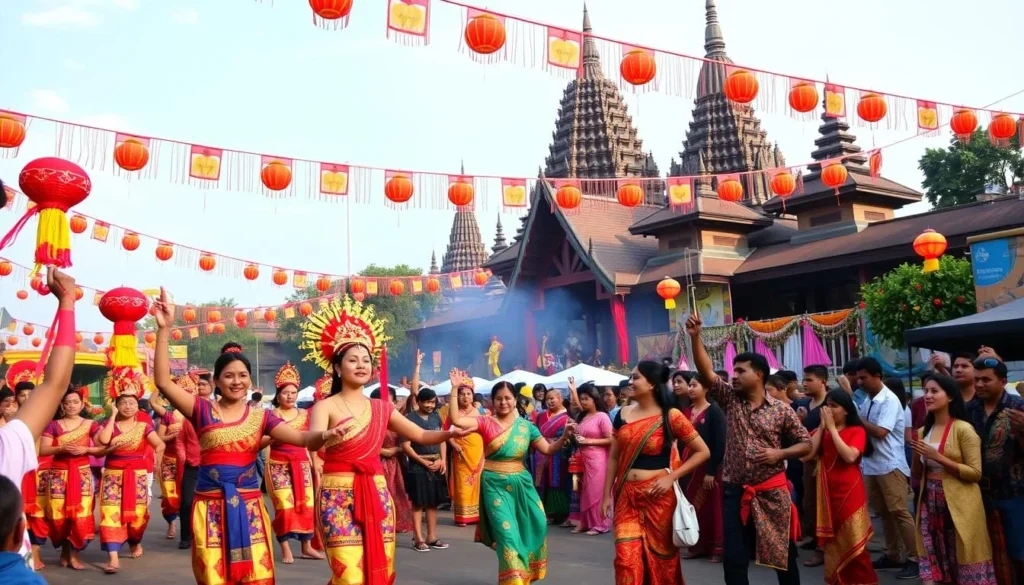
Traditional Activities During Khmer New Year
During this three-day celebration, you’ll witness traditional games like Bos Angkunh (tug-of-war) and Chol Chhoung (ball-throwing) that locals enthusiastically participate in. Water plays a significant role in the celebration, symbolizing purification and the washing away of past sins and bad luck.
Best Places to Experience Khmer New Year in Siem Reap
In Siem Reap, you can experience the festivities at Angkor Wat where special ceremonies take place, or join locals in town celebrations. Be aware that many businesses close during this period as locals return to their hometowns, creating a unique atmosphere but potentially limiting some services.
Water Festival: Celebrating Cambodia’s Unique River Phenomenon
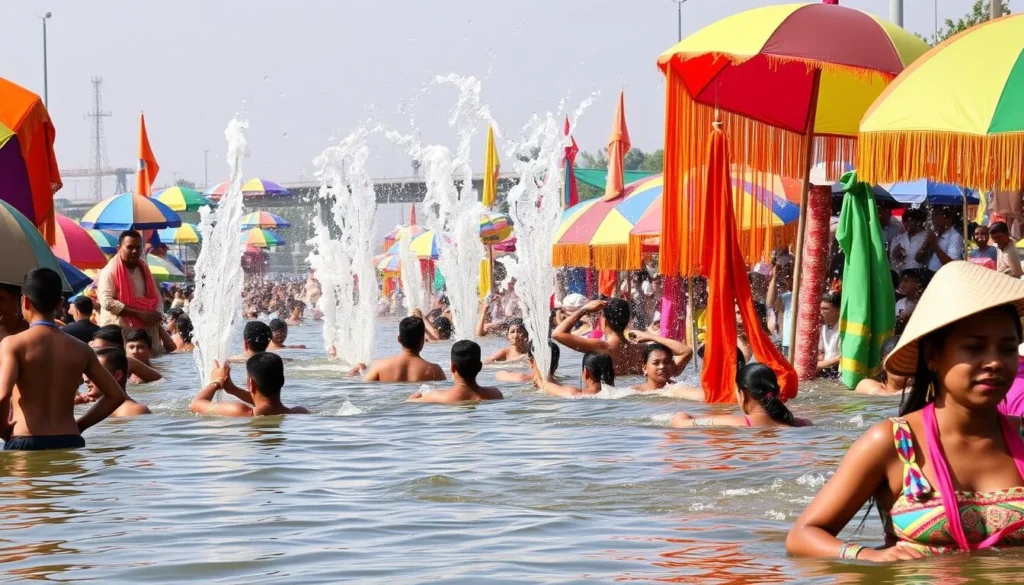
As you experience Cambodia’s Water Festival, you’ll be immersed in a vibrant celebration that honors the country’s distinct river phenomenon. The Water Festival, known as Bon Om Touk, is an annual event held in Phnom Penh, typically occurring in November over three days. It commemorates the reversal of the flow between the Mekong and Tonle Sap rivers, a unique natural phenomenon.
Boat Racing Traditions
The Water Festival features spectacular boat races with hundreds of colorful longboats competing, creating an exciting atmosphere along the riverbanks. Originally, these boat races served as naval battle training, but today they represent regional pride and community spirit.
Experiencing the Water Festival as a Visitor
As a visitor, you’ll want to arrive early to secure good viewing spots along the riverbanks for the boat races. You can enjoy illuminated floats, fireworks displays, and traditional music performances that create a carnival atmosphere. While the main celebrations occur in Phnom Penh, Siem Reap hosts its own version of the festival with local boat races and festivities, connecting you with Cambodia’s agricultural heritage and water-dependent way of life.
The festival typically occurs in November, marking the end of the rainy season and the beginning of the fishing season. This celebration offers cultural insights beyond the typical tourist experience, allowing you to engage with local traditions and community spirit.
Pchum Ben: Cambodia’s Festival of the Dead
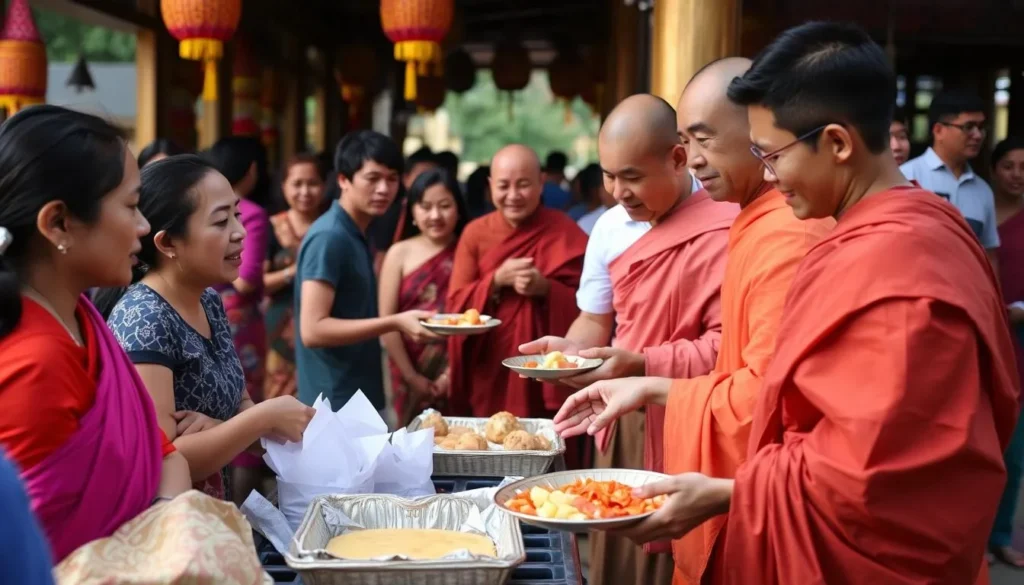
As a visitor to Cambodia, experiencing Pchum Ben can be a profound cultural encounter. Pchum Ben is a 15-day festival that culminates on the 15th day of the 10th Khmer month, honoring the ancestors and providing a unique insight into Cambodian spiritual beliefs.
Rituals and Offerings During Pchum Ben
During Pchum Ben, families gather to visit temples and pagodas, offering food, particularly traditional rice balls known as “bay ben,” to monks. These offerings are believed to be passed on to the spirits of ancestors, alleviating their suffering. The preparation of these special rice balls is central to the rituals, benefiting wandering spirits.
Participating Respectfully as a Visitor
As a respectful visitor, you can observe the ceremonies at local temples, but it’s essential to dress modestly and maintain quiet, respectful behavior. By doing so, you’ll not only show respect for the local culture but also gain a deeper understanding of the significance of Pchum Ben, which takes place over a period of one day culminating the 15-day celebration, and experience the multifaceted nature of Cambodian cultural traditions.
Royal Ploughing Ceremony: Ancient Agricultural Traditions
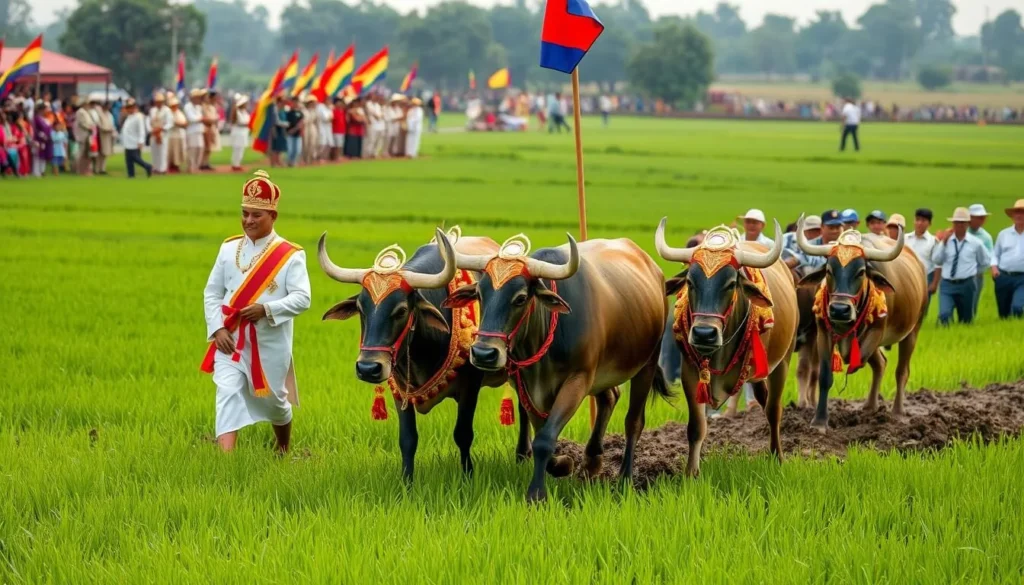
The Royal Ploughing Ceremony, also known as Preah Reach Pithi Bonn Chrot Preah Neang Kol, is a captivating ceremony that highlights Cambodia’s agricultural traditions. This ancient ritual, dating back to the Funan period (1st-6th century), is a significant event that marks the traditional start of the rice-growing season and forecasts the crop yield for the following year.
The Ceremony’s Agricultural Predictions
The Royal Ploughing Ceremony includes an agricultural prediction aspect, where royal oxen are presented with various foods, and their choices are interpreted as forecasts for the coming year’s harvest. This unique ritual showcases the deep connection between the Cambodian monarchy, agriculture, and spiritual beliefs.
Historical Significance of the Royal Ritual
The ceremony represents a rich cultural heritage and demonstrates how ancient traditions continue to play a role in modern Cambodian life. By attending this ceremony, you gain insight into Cambodia’s agricultural foundation and the spiritual practices that have supported farming communities for centuries.
Buddhist Celebrations in Siem Reap
As you explore Siem Reap, you’ll discover that its Buddhist celebrations provide a unique glimpse into the local culture and spiritual practices. These events offer a serene contrast to the more festive celebrations in the Cambodian calendar.
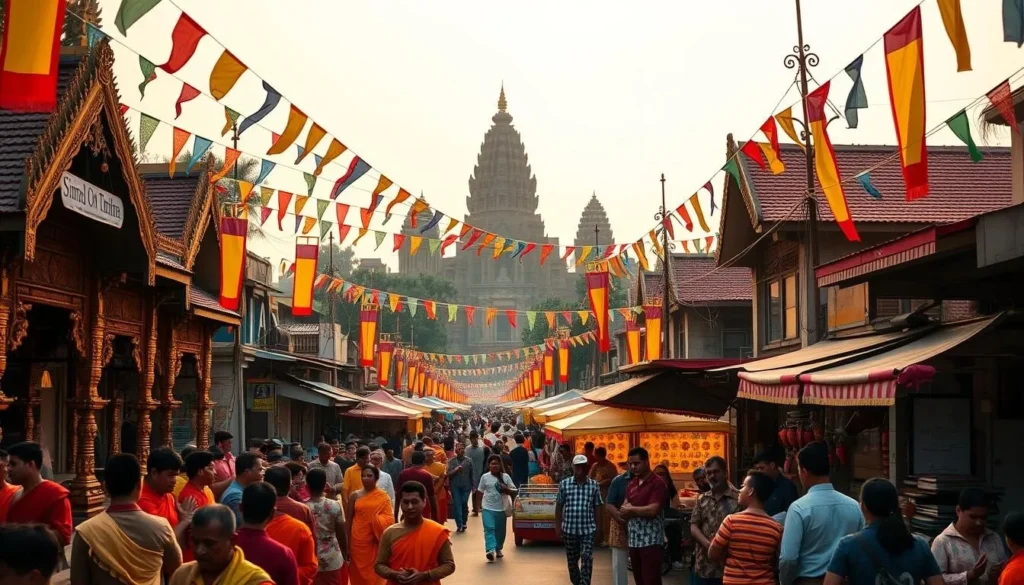
Meak Bochea: Festival of the Monks
Meak Bochea, celebrated on the full moon day of the third lunar month, commemorates Buddha’s sermon to 1,250 enlightened disciples. On this day, monks meditate and pray, while locals offer necessities and participate in candle ceremonies at temples, symbolizing their reverence for the Triple Gem of Buddhism. You’ll see monks leading meditation sessions and dharma talks, while devotees offer food and necessities to the monastic community.
Vesak Bochea: Celebrating Buddha’s Life
Vesak Bochea, also known as Buddha’s Birthday, honors three significant events in Buddha’s life: his birth, enlightenment, and passing into nirvana. On this day, Buddhists in Cambodia pray to Lord Buddha and donate food and clothes to local monks, fostering a sense of community and spiritual growth. You can participate in evening processions where devotees circle the temple three times with candles, incense, and flowers, representing the Triple Gem of Buddhism.
These Buddhist celebrations provide a contemplative atmosphere and offer you a unique opportunity to experience Cambodia’s spiritual heritage. By observing or respectfully participating in these events, you’ll gain deeper insights into the Buddhist principles that guide much of Cambodian life.
Angkor Festival: Celebrating Arts and Culture
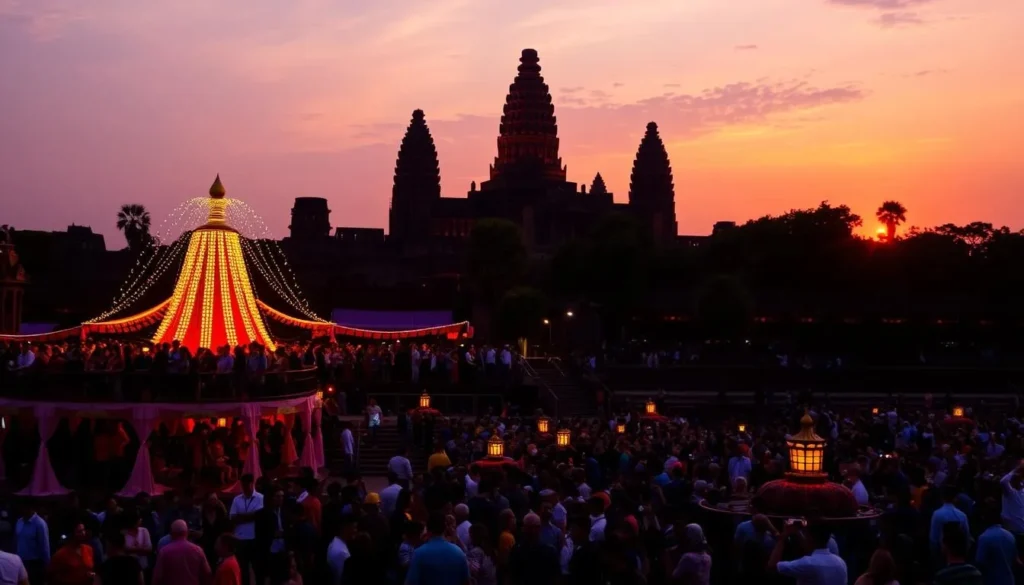
As you visit Siem Reap, don’t miss the Angkor Festival, a vibrant celebration of arts and culture that transforms the ancient temples into spectacular venues. This event is a showcase of Cambodia’s rich cultural heritage, featuring traditional music, dance, and theater performances.
Traditional Performances at Ancient Temples
The Angkor Festival brings to life the ancient stories and myths through traditional Khmer dance, music, and theater performances at the iconic Angkor Wat, a significant place for cultural celebrations in Cambodia.
International Artists and Cultural Exchange
This festival in Cambodia attracts artists from across Asia, creating a unique cultural exchange that blends traditional and contemporary artistic expressions, enriching the cultural experience for visitors.
The festival typically takes place in February, showcasing Cambodia’s rich artistic traditions against the majestic backdrop of Angkor Wat. You’ll witness traditional performances, and the event celebrates the artistic revival of Cambodia, offering a deeper appreciation of the artistic heritage that created the magnificent temples.
Siem Reap, Cambodia: Top Festivals to Check Out When Visiting
As you plan your trip to Siem Reap, Cambodia, you’ll want to time your visit to coincide with one of the many exciting festivals that take place throughout the year. Cambodia’s festivals and holidays are decided based on the Khmer lunar calendar, which means that the dates shift slightly each year in the Gregorian calendar.
Seasonal Festival Calendar
The city’s festival calendar is packed with events that showcase the country’s rich cultural heritage. Here’s a breakdown of what you can expect:
- January to March: Angkor Festival and Buddhist celebrations
- April: Khmer New Year
- May: Royal Ploughing Ceremony and Vesak Bochea
- September/October: Pchum Ben festival
- November: Water Festival
| Month | Festival/Event | Description |
|---|---|---|
| Jan-Mar | Angkor Festival | Celebration of arts and culture |
| Apr | Khmer New Year | Lively celebration of the Khmer New Year |
| May | Royal Ploughing Ceremony | Ancient agricultural traditions |
Lesser-Known Local Celebrations
Beyond the major festivals, you’ll discover smaller local celebrations throughout the year that provide authentic cultural experiences. These include village harvest festivals, temple anniversary celebrations, and local arts events, which offer opportunities to connect with communities outside the tourist circuit.
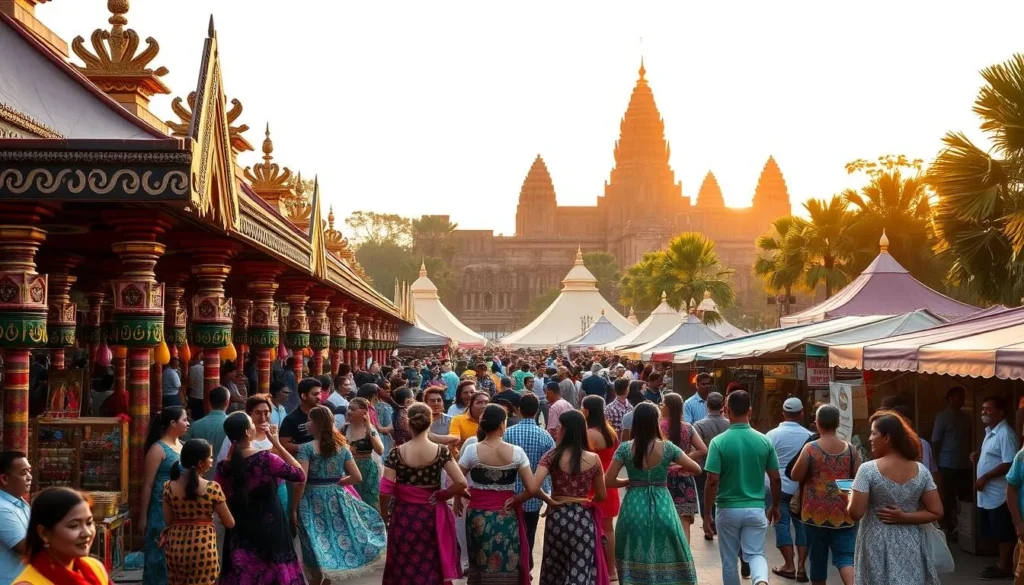
By planning your visit around Siem Reap’s festival calendar, you can significantly enhance your travel experience and gain a deeper understanding of Cambodian culture.
The Giant Puppet Parade: A Community Celebration
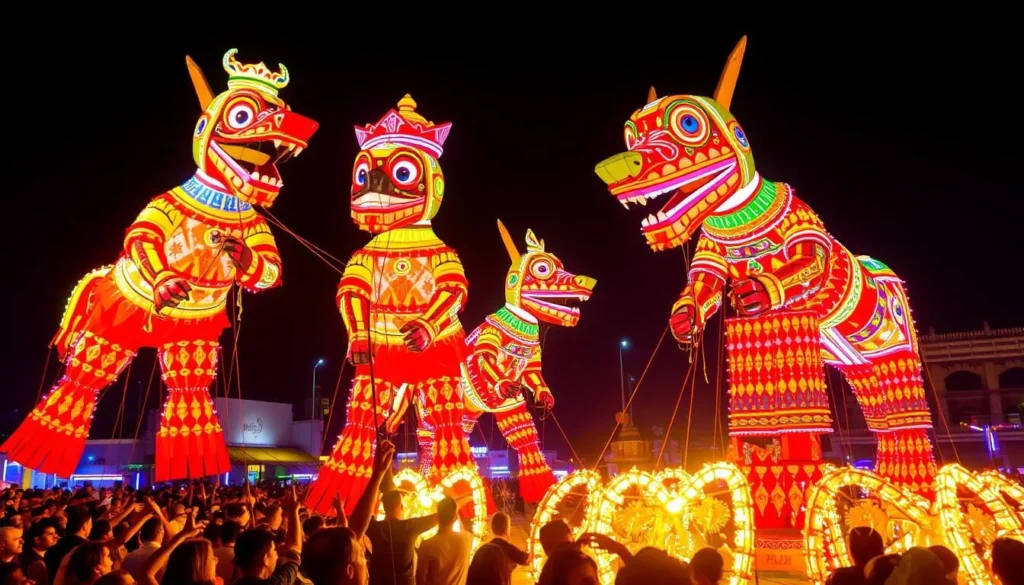
As you join the locals, you’ll be delighted by the Giant Puppet Parade, a colorful community celebration that typically takes place in February in Siem Reap. This unique festival features enormous illuminated puppets, some reaching heights of 30 feet, parading through the streets after dark.
The Story Behind the Puppets
The puppets are created by local artists working with children from schools and community organizations, representing traditional Cambodian characters and stories. This community-focused event began as a way to support arts education and community development, combining creative expression with cultural preservation.
Joining the Festivities as a Visitor
You can join the parade route along with locals and visitors, following the puppets through the streets in a festive atmosphere with music and performances. The parade typically ends with a party atmosphere where you can meet the artists and learn about the stories behind the puppet designs, enhancing your overall experience at this vibrant celebration.
By attending the Giant Puppet Parade, you’re supporting local arts initiatives that provide opportunities for disadvantaged youth while preserving cultural storytelling traditions, making it a meaningful event to be a part of.
Angkor Wat International Half Marathon
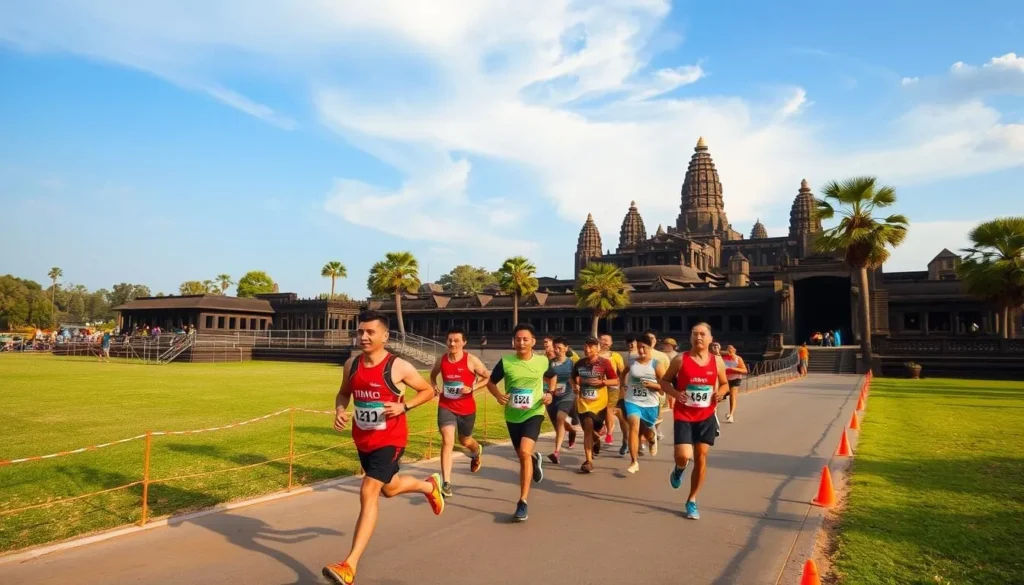
The Angkor Wat International Half Marathon offers a rare opportunity to run through a UNESCO World Heritage site. This annual event typically takes place in early December, attracting participants from around the world.
Running Through Ancient History
As you run or walk, you’ll pass by ancient temples and monuments, creating an unforgettable experience that makes this event truly special. You’ll be running through the history of Angkor Archaeological Park.
Supporting Charitable Causes
The marathon supports various charitable causes, including supporting landmine victims and providing healthcare to local communities in Siem Reap. This makes it a meaningful way to experience the place.
Tips for Attending Cambodian Festivals as a Visitor
Cambodian festivals offer a unique glimpse into the country’s rich cultural heritage, but visitors must be mindful of certain guidelines. Understanding and respecting local customs will enhance your experience and make your interactions more meaningful.
Cultural Etiquette During Religious Festivals
When attending religious festivals, dress modestly by covering your shoulders and knees. Remove your shoes when entering temples, and be respectful around monks. Learning basic Khmer phrases like greetings and “thank you” (orkun) can go a long way in showing respect.
- Dress appropriately for religious festivals.
- Remove shoes when entering temples.
- Be mindful of your behavior around monks.
Practical Travel Advice During Festival Seasons
Plan your accommodations well in advance, as Siem Reap can become fully booked during major festivals like Khmer New Year and Water Festival. Be aware that many restaurants and businesses may close or operate with limited hours as staff return to their hometowns.
| Festival | Date | Tips |
|---|---|---|
| Khmer New Year | Mid-April | Book accommodations early, stay hydrated. |
| Water Festival | November | Be prepared for crowds, carry cash. |
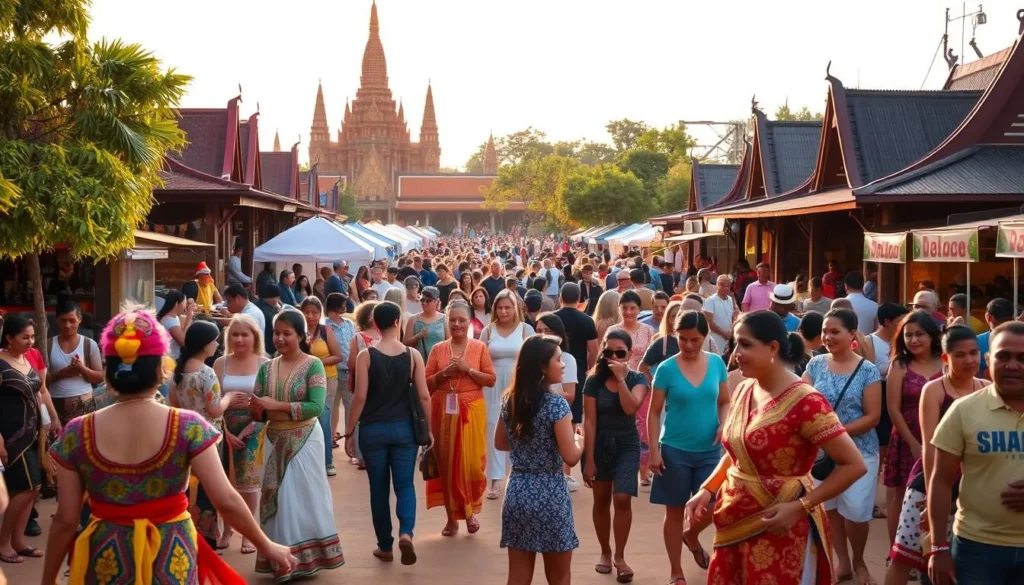
By being informed and respectful, you can have a fulfilling experience at Cambodian festivals. Always ask permission before photographing ceremonies or participants, and be prepared for varying time schedules and limited transportation options during peak festival days.
Conclusion
Siem Reap’s festivals offer a unique window into the heart of Cambodian culture and traditions. By attending these celebrations, you’ll experience the rich cultural heritage of Cambodia firsthand. From the jubilant atmosphere of Khmer New Year to the spiritual depth of Buddhist ceremonies, there’s something for every traveler. The food, music, and dance will create lasting memories. Approach these festivals with respect and curiosity to gain meaningful insights into Cambodian values and way of life.
The above is subject to change.
Check back often to TRAVEL.COM for the latest travel tips and deals.
Here are some Tours & Sightseeing suggestions that might pique your interests!
